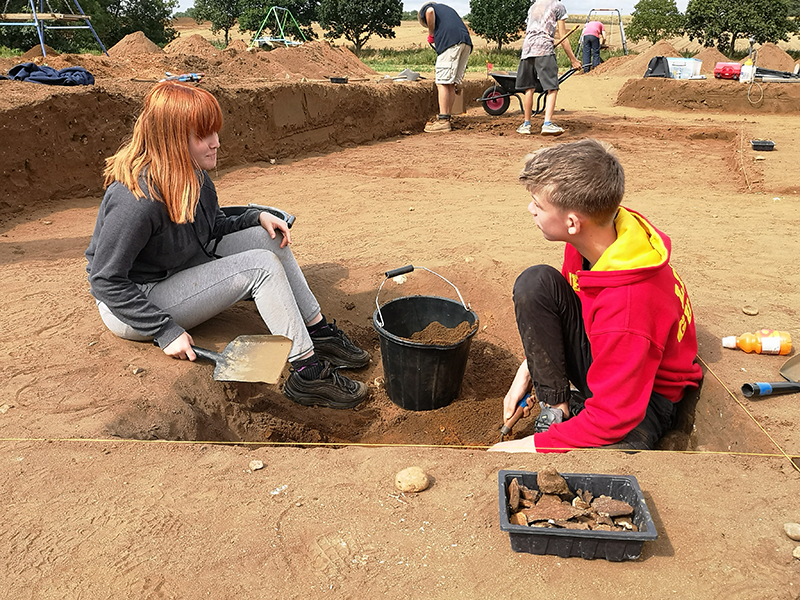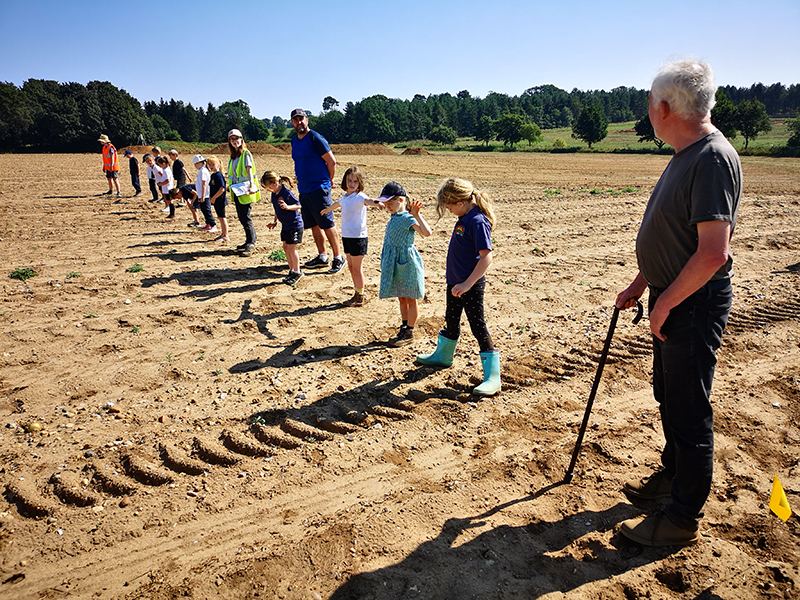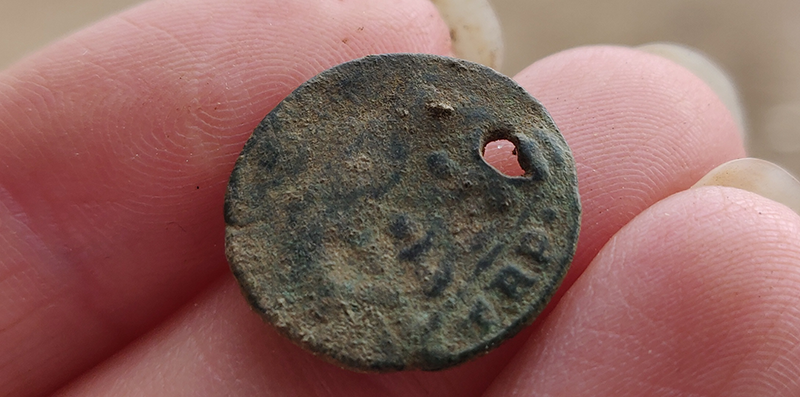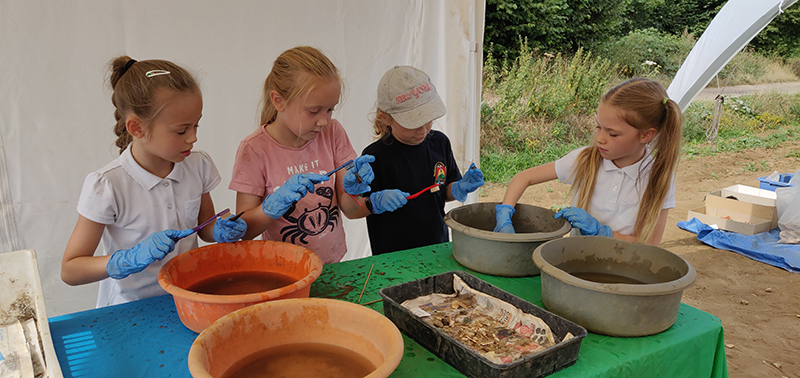Archaeology & History
Archaeologists Say They May Have Found the Anglo-Saxon Workshop Where the Treasures of Sutton Hoo Were Forged
Student volunteers assisted in the historic find.

Student volunteers assisted in the historic find.

Sarah Cascone

Archaeologists in Rendlesham, Suffolk, have uncovered a seventh-century settlement that may have been home to the craftspeople who made the treasures of nearby Sutton Hoo, widely considered the greatest archaeological find in U.K. history.
Rendlesham is just three miles away from the early medieval cemeteries at Sutton Hoo, and those buried there “probably lived at Rendlesham,” a Suffolk County Council spokesman told the Daily Mail. “There is also evidence of craft working at Rendlesham, so it is possible they may have produced some of the objects discovered in the Sutton Hoo burial grounds.”
Sutton Hoo’s legendary discovery in 1939 was the subject of the 2020 Netflix film The Dig, starring Carey Mulligan as landowner Edith Pretty, who hired archaeologist Basil Brown (Ralph Fiennes) to excavate the mysterious earthen mounds on her property.
What Brown uncovered was more astounding than either of them imagined: a burial site of a likely king, interred in an 88-foot-long ship rich with Anglo Saxon artifacts including a rare masked helmet (one of only four known examples), Byzantine silver, and finely woven textiles. The grave may have belonged to King Rædwald of East Anglia, who ruled in the seventh century.

Volunteers from Rendlesham Primary School with professor Tom Williamson during excavations at Rendlesham. Photo ⒸSuffolk County Council.
The ornate artifacts, which Pretty eventually donated to the British Museum, transformed historians’ understanding of Anglo-Saxon culture. Previously thought to be quite primitive, the society was in fact part of a vast network of trade, craftsmanship, and travel.
Now, that picture is coming into even sharper focus. The new find suggests some Sutton Hoo treasures may have been made at Rendlesham, where archaeologists recently uncovered melted metal fragments and slag, a byproduct of smelting ore. The discovery gives them reason to believe local craftsmen worked in iron smithing and with copper alloy.

A pierced Roman coin found during excavations at Rendlesham. Photo ⒸSuffolk County Council.
Other finds at the site’s 1,400 year-old settlement include a copper alloy brooch and buckle, pottery vessels, glass beads, and tools for weaving such as spindle whorls and loomweights. There was also a Roman coin dating from 330 to 335 AD with a hole drilled into it, suggesting it was repurposed as a piece of Anglo Saxon jewelry.
The Suffolk County Council Archaeological Service and Cotswold Archaeology Ltd are leading the current work as part of a four-year project funded by a £517,000 ($672,500) National Lottery Heritage Fund grant. Six weeks of field work was conducted over the summer, with experts assisted by 150 volunteers, including students from the local elementary school.

Volunteers from Rendlesham Primary School cleaning archaeological finds at Rendlesham. Photo ⒸSuffolk County Council.
“At Rendlesham, there was a royal settlement which flourished for 300 years from the fifth to the eighth centuries,” Christopher Scull, the project’s principal academic advisor and a professor at University College London and University of Cardiff, said in a statement. “Our first season of excavation has unravelled some of the complexities of this internationally significant site, and given us important insights into the lives of the people whose farming and craft skills supported the early rulers of the East Anglian kingdom.”
Previous excavations carried out at Rendlesham between 2008 and 2014 uncovered a royal settlement where rulers such as King Rædwald may have lived.